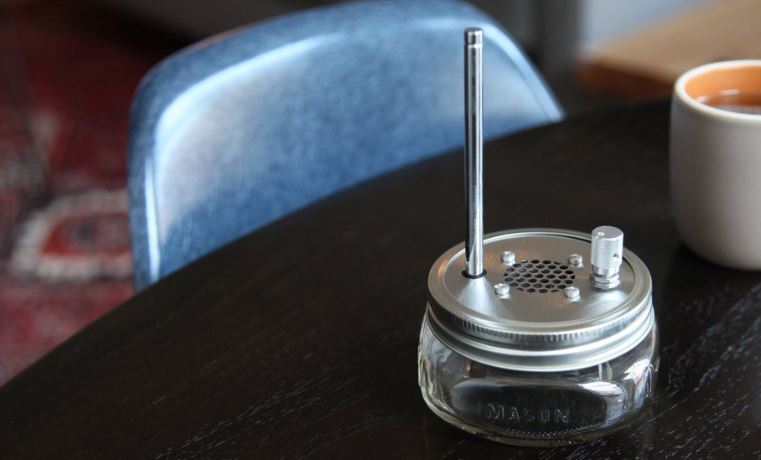Many thanks to SWLing Post contributor, Paul, who shares a number of articles about the one-frequency FM radio called the Public Radio:
Might be of interest to you and readers of the SWLing Post:
https://www.thepublicrad.io/Why does the Public Radio cost $60?
http://pencerw.com/feed/2018/11/21/why-its-sixty-dollarsHow to program a radio which is sealed inside a cardboard shipping box (they did not implement this for production):
https://wp.josh.com/2017/03/18/capacitive-coupling-casestudy-programming-the-public-radio-without-removing-it-from-its-sealed-shipping-box/The Public Radio manufacturing line:
http://pencerw.com/feed/2018/2/8/the-public-radios-assembly-fulfillment-processes
Thanks for sharing, Paul. We’ve mentioned the Public Radio before, but I did not realize they were completely produced and assembled in the US.
Post Readers: Please comment if you own a Public Radio. I’m very curious what you think about the audio fidelity.


Cute but I suppose I’m cut from a different bolt of cloth. First thing I thought of was North Korea and then 1984 came to mind.
If it’s the “locked to one channel” aspect that makes you think that, remember that several “free” countries experimented with similar schemes (e.g. Australia’s “sealed-set” system) decades earlier.
And single-channel “sports” radios – locked to either the local broadcaster carrying the commentary, or a low-power transmitter covering the field/stadium – were both sold & given away up until at least the 80’s.
In fact, just looked – appears you can still buy such things for < US$1ea (min 5000), including customised frequency. So they're probably still being used/sold/given away somewhere…
Well, now I have to ask. Why? This sounds like an interesting project to implement as a DIY thing for someone relatively new to DIY electronics projects. But I do not understand why people are so interested in purchasing already-manufactured versions of these. All of us here undoubtedly have many radios with FM included, and they offer many of those features this project intentionally avoided including. Supporting manufacturing in the United States may be nice, but there are other companies you could do that for and some commenters with these sets aren’t even located there. So what is the appeal of this set specifically? Does it have some mystery feature that sets it apart from a radio I can tune to any broadcast I like?
> “This sounds like an interesting project to implement as a DIY thing for someone relatively new to DIY electronics projects. But I do not understand why people are so interested in purchasing already-manufactured versions of these”.
You and me both. It’s is kinda cute, but I remember checking it out back in … 2013? 2014? .. when it launched on Kickstarter and thinking “it’d make a fun kit for kids or newbies, but it’s like only a few hours dev work & a couple of prototype rounds for something you could buy for $2 at Crazy Clark’s”.
On the other hand they raised nearly US$90k with it and I didn’t, so clearly I was missing something… 😉
I ordered a DYI version . It gave me satisfaction not only assembling but also programming. An Interesting fact is that, the size of the jar affects the sound. I gave the radio to my wife. Satisfied, she listens daily to her favorite radio station (106.7 NY) in the kitchen and bedroom. Excellent radio!
So what size jar gave you the best sound? Does bigger improve the bass, or just sound quality in general? I built a Mason Jar amp kit and have 2 more to build, but haven’t experimented with different size jars.
Thanks
Yes, a larger jar adds bass. But it looks less cool in this configuration. The second disadvantage is the increased risk of clumping because the weight is all up!
Thanks for the info, my wife does a lot of canning so have access to some huge Mason Jars, Maybe I can combine one of these amps or the radio above with a terrarium 😉
Ken
I wonder if he would be interested in building these things out for WWV’s frequencies in celebration of their 100th anniversary?
I also wonder if they could be tuned for NOAA Weather Radio as it’s FM, just a higher frequency.
The firmware upload program gave several options. It allowed operating in all FM world standards. Unfortunately, there was no chance to set a higher frequency.
I have three of them down here in Australia! They are great – the sound quality is just fine, very acceptable.
Excellent! Guessing one for each of your stations? 🙂
That would be great (to have one for each Seribatu station!) but no – I have had them down here for a few years.
I thought they were a very cool idea, so I supported the original Kickstarter campaign to bring the radio project to life and placed a order for one. I was so impressed with the quality that I got another two from the second production run and gave them to two good friends as Christmas presents a few years ago.
All 3 are locked to ABC’s (Australia) JJJ (Triple J) Sydney frequency 105.7.